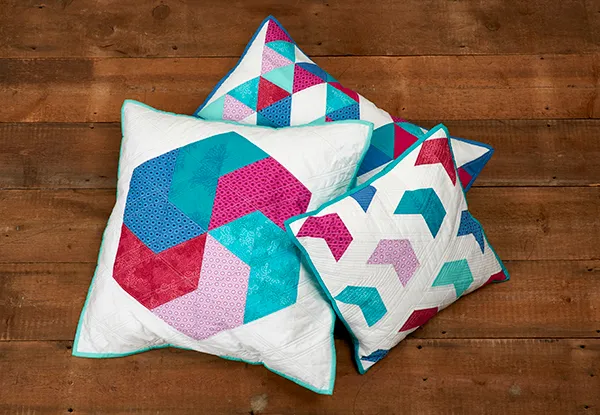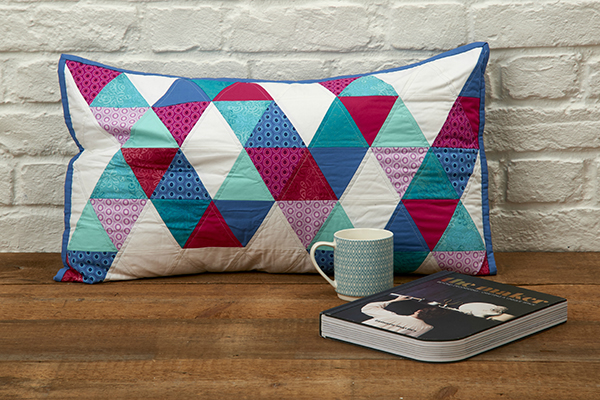Cutting out
Step 1
From the white fabric cut four (4) 2½in x WOF strips. Subcut to give eighty (80) 2½in 60-degree triangles.
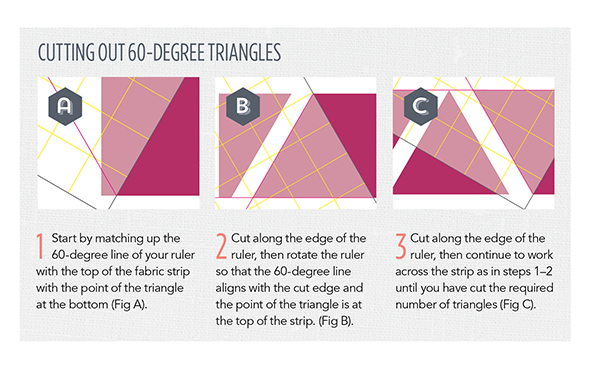
Step 2
From the print fabrics cut:
- Four (4) 2½in 60-degree triangles from each of seven (7) different prints.
- Seven (7) 2½in 60-degree triangles from one (1) print.
- Three (3) 2½in 60-degree triangles from one (1) print.
- Two (2) 2½in 60-degree triangles from one (1) print.
You will have forty (40) triangles in total.
Cutting out the 60-degree triangles
Step 1
From the cushion back fabric cut two (2) 16½in x 11½in rectangles.
Step 2
From the binding fabric cut two (2) 2½in x WOF strips.
Making the cushion top
Step 1
Arrange the white and print fabric triangles into eight rows of fifteen triangles each, experimenting with different print placements and rotating alternate triangles by 180 degrees so that the triangles tessellate.
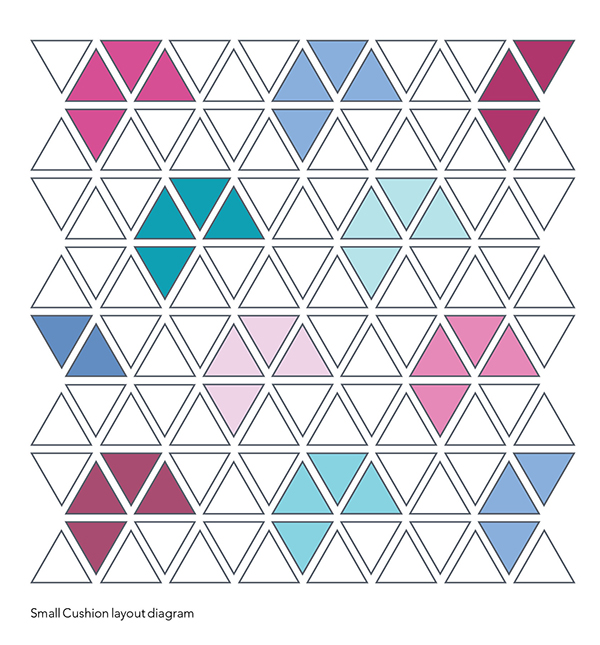
Step 2
Sew the triangles together one row at a time. Start by taking the first triangle and placing it right side up. Insert a pin centrally in the triangle, with the pin’s head facing towards the top edge of the triangle. The pin is a useful marker to ensure you keep the rows correctly orientated when sewing. Take the second triangle in the row and place it RST with the first triangle and pin along the edge to be joined, placing the pins at right angles to the seam. This will help to avoid any bias stretch as you sew.
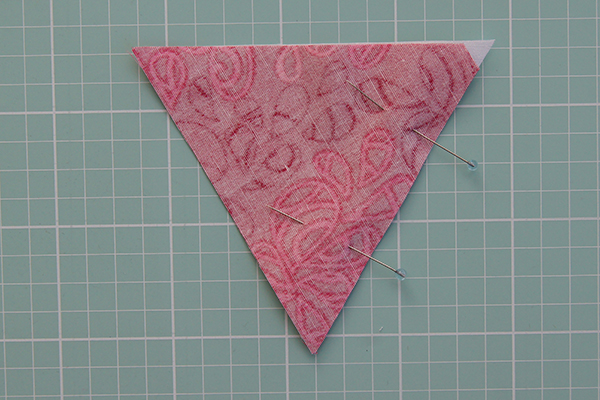
Step 3
Sew the triangles together. Open out and finger press the second triangle to the right.

Step 4
Take the third triangle and place it RST with the second triangle. Pin in place and then repeat steps 6–7 to join. Open out and finger press the third triangle to the right.

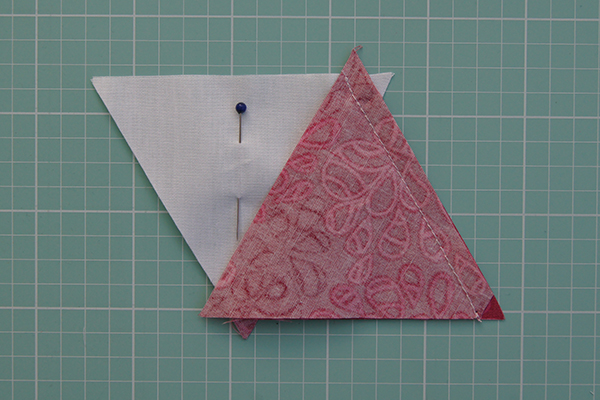
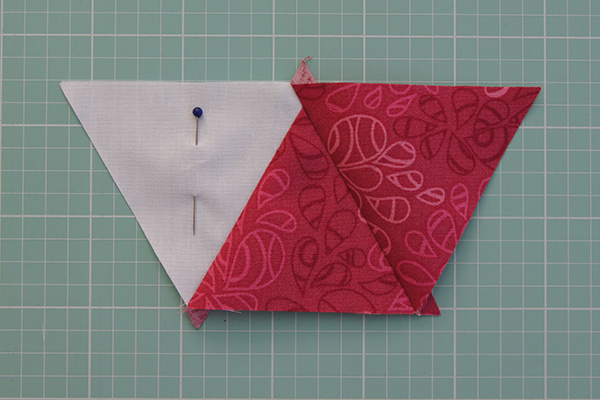
Step 5
Repeat step eight to add the remaining triangles to the row. Once you have sewn the entire row, press the seams and trim off any dog ears.
Step 6
Repeat steps 6–9 to make the remaining rows. Alternate rows will start with a triangle that’s orientated in the opposite direction to the previous row.
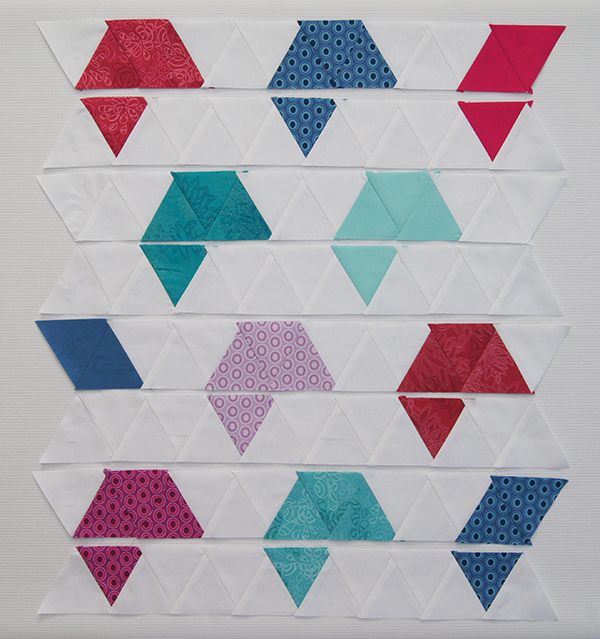
Step 7
Join the rows, making sure you carefully pin the points of your triangles in place before you sew. Press the seams open.
Step 8
Trim the cushion top to 16½in square, making sure to leave a ¼in seam allowance to avoid losing the points of the triangles when binding.

Quilting & finishing
Step 1
Place your cushion top on top of the 16½in batting square and baste in place. Quilt as desired. Jemima quilted a variety of diagonal lines. Trim off the excess batting.
Step 2
Take the two (2) 16½in x 11½in cushion back rectangles. On one long edge of each rectangle turn over a ¼in seam to the wrong side, then turn over another 1in and press. Topstitch the folded edge to secure. These are the cushion back pieces.
Step 3
Place the quilted cushion front right side down. WST and matching up the raw edges place one cushion back piece on top with the neatened seam running across the centre of the cushion. Then in the same way place the second cushion back piece on top – the cushion back pieces will overlap. Pin or clip all around. Stitching through all of the layers, machine baste all around the perimeter stitching approx 1⁄8in from the edge.
Step 4
Join the binding strips together end-to-end using a diagonal seam. Press the seam open and trim away the dog ears. Fold in half lengthwise, WST, and press.

Step 5
Sew the binding to the right side of the cushion using a 1⁄4in seam, folding a mitre at each corner. Fold the binding over to the back of the cushion and then hand stitch in place to finish.
